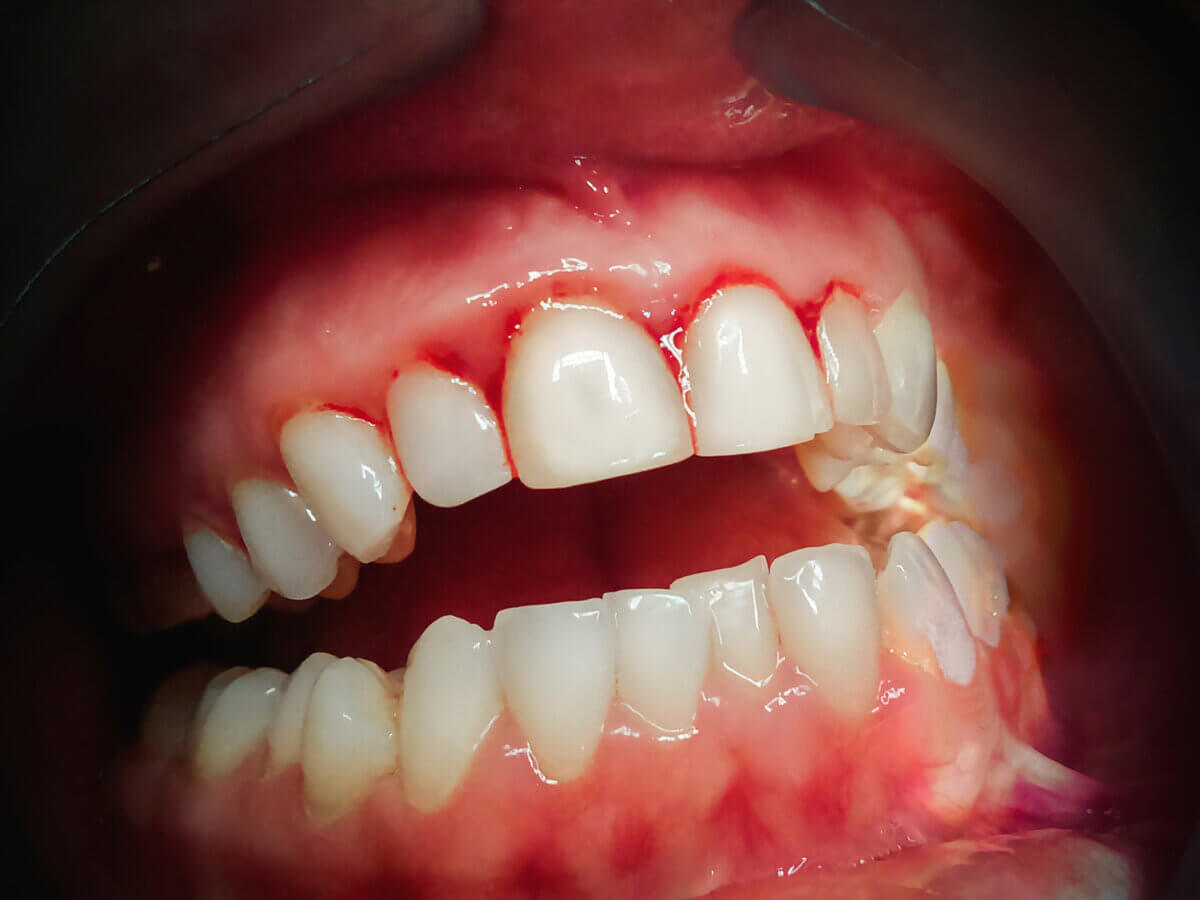Blog
Dental hygiene tips for healthy teeth & gums

How Do You Fix Bleeding Gums When Flossing?
While regular flossing is crucial to good oral health, finding bleeding gums might be alarming. Gums that bleed while flossing may indicate gum disease or poor flossing technique. Fortunately, if you take the appropriate steps and form healthy routines, you can stop your gums from bleeding and keep your teeth in good shape. This article will provide practical methods to stop flossing-related bleeding gums.
Gum Bleeding: What You Need to Know
Gingivitis and periodontitis, both forms of gum disease, are the leading causes of bleeding gums. Inflammation and infection of the gum tissue can be caused by plaque accumulation at the gum line. The infected gums are so sensitive that they may bleed when you floss them.
Using the wrong flossing method is another possible cause of bleeding gums. Injuries to the gums and subsequent bleeding might result from aggressive or abrasive flossing motions. Avoiding injuring the gum tissue using gentle but thorough motions is crucial when flossing.
How to Stop Your Gums from Bleeding When You Floss:
- Maintain Consistency:
When treating bleeding gums, it is essential to be consistent. Keep your gums healthy and irritation-free by making flossing a routine. Regular flossing can help improve gum health and minimize bleeding gums over time.
- Select the Appropriate Floss:
Using the correct floss can help stop gum bleeding. Choose a soft and gentle floss piece on your gums and teeth, such as waxed or weaved floss. Don’t use anything that could pierce your gums, such as a dental pick or string floss.
- Protect your gums by using a gentle method while you floss.
Rather than snapping the floss down, use a sawing motion to slide it through your teeth gently. Curve the floss around each tooth in a C shape to remove plaque and debris and slide it under the gumline.
- Carefully floss right up to the gum line because most plaque builds up.
Take time and carefully floss between your front and back teeth to remove any plaque buildup. Regular and thorough flossing has been shown to improve gum health and decrease bleeding.
Some other things to keep in mind
- If you use too much force on your gums during flossing, you risk irritating them and perhaps causing them to bleed. When cleaning in between your teeth, use a pressure that is just light enough to get the job done without hurting your gums. Don’t give up if your gums bleed when you first start brushing; the bleeding should stop with practice.
- Antibacterial mouthwash rinses help destroy bacteria and reduce inflammation, so they’re a great addition to your post-flossing routine. Find a mouthwash that works on both gum disease and general oral hygiene. To maximize the efficiency of the mouthwash, swish it for the time specified on the packaging.
- Scheduling a dental checkup is essential if you have chronic bleeding gums after flossing. A dentist will be able to evaluate the condition of your gums, diagnose any underlying problems, and recommend solutions. Seeing the dentist consistently is essential for good oral hygiene and the avoidance of gum disease.
- Eating a diet rich in essential nutrients will help support healthy gums. Therefore, it’s important to keep that balance. Solid and healthy gums are dependent on vitamin C and other nutrients. Support your dental health and your body as a whole by eating a diet rich in fruits, vegetables, healthy grains, lean proteins, and dairy products.
Conclusion:
Gum bleeding when flossing can indicate more serious dental health issues, but it can be treated appropriately with the proper care. Consistency, good technique, and the right floss are crucial to stop your gums from bleeding while flossing. To maintain healthy gums, floss carefully but thoroughly and then rinse with an antimicrobial mouthwash. See your dentist regularly so any issues with your gums can be addressed. You may stop bleeding gums for good by following these steps and sticking to other proper oral hygiene practices. Keep in mind that solid gums are the key to a stunning grin.
